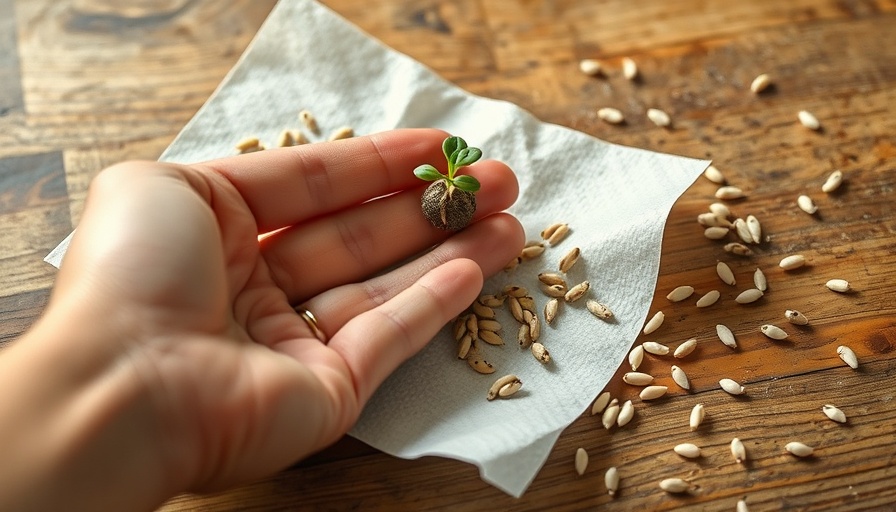
Unveiling the Simple Art of Seed Starting
For many aspiring gardeners, the transition from dreaming about lush gardens to actually cultivating plants can be daunting. One of the most crucial steps in this journey is starting seeds, and there's a simple yet highly effective method that can transform your gardening experience: the paper towel method.
Why Start Seeds in a Paper Towel?
Starting seeds in a paper towel is not just handy; it’s an invaluable skill that helps confirm seed viability. Have you ever opened an old seed packet, unsure if any of them would sprout? The paper towel germination technique comes to the rescue here. By testing your seeds ahead of time, you can save money and space in your indoor gardening setup.
This method is particularly beneficial for those cramped for space or eager to maximize their seed-starting efficiency. Rather than filling trays or pots with soil and planting seeds that may not germinate, you can identify which seeds are worth planting in advance. This way, you’ll only commit space to seeds that are likely to sprout, preventing empty cell packs and wasted resources.
The Basic Supplies You Need
The essentials for the paper towel germination method are quite minimal, making it accessible for anyone:
- Paper Towels or Coffee Filters: Most gardeners prefer paper towels, but coffee filters work as well.
- Ziptop Bags or Plastic Containers: These will create a greenhouse effect for humidity and warmth.
- Water Sprayer: Fine misting is preferable for moistening paper towels.
- Labels: Keeping track of your seeds’ types and varieties is essential for organization.
- Seeds: Select your favorites or those you wish to test.
How to Prep and Start Your Seeds
Ready to dive in? Follow these simple steps to get started:
- Moisten Your Paper Towel: Dampen the towel or filter either by spritzing water across its surface or running it under a faucet. The goal is to have it moist but not dripping.
- Arrange Your Seeds: Place around ten seeds about an inch apart on one side of the towel. This spacing ensures they have enough room to sprout without overcrowding.
- Fold and Seal: Carefully fold the paper towel over the seeds, press lightly to ensure good contact, then place it inside a ziptop bag or a plastic container. If using a bag, inflate it slightly to create a mini greenhouse effect which helps maintain humidity.
- Label Your Experiment: Include pertinent details like the seed type and date to help track your germination progress.
Benefits of the Paper Towel Method
Learning this technique isn't just about seed starting; it's also about efficiency. By germinating seeds on paper towels, gardeners can:
- Reduce Wasted Space: Grow only what has proven to be viable.
- Direct Planting: Once seedlings emerge, you can easily transplant them into pots or soil without overcrowding.
- Evaluate Older Seeds: This method is particularly valuable for testing older seeds that might have been stored away, allowing gardeners to plan purchases wisely.
Potential Challenges and Solutions
While starting seeds in paper towels is generally straightforward, there are potential pitfalls, such as seeds that fail to sprout. This could stem from various factors:
- Seed Age: Old seeds may have significantly declined in viability.
- Moisture Levels: Too much or too little moisture can hinder germination.
- Temperature Variations: Ensure the seeds remain in a warm area, as temperature plays a crucial role in germination success.
To overcome these challenges, be meticulous with the amount of water used and keep an eye on temperatures in their vicinity. Adjust as necessary.
Join the Gardening Community
The world of gardening opens doors to creativity and community. Sharing experiences with seed starting can foster connections with fellow gardeners. Online forums, local gardening clubs, or even casual conversations with neighbors can lead to enriching exchanges about techniques, successes, and even failures.
 Add Row
Add Row  Add
Add 


Write A Comment